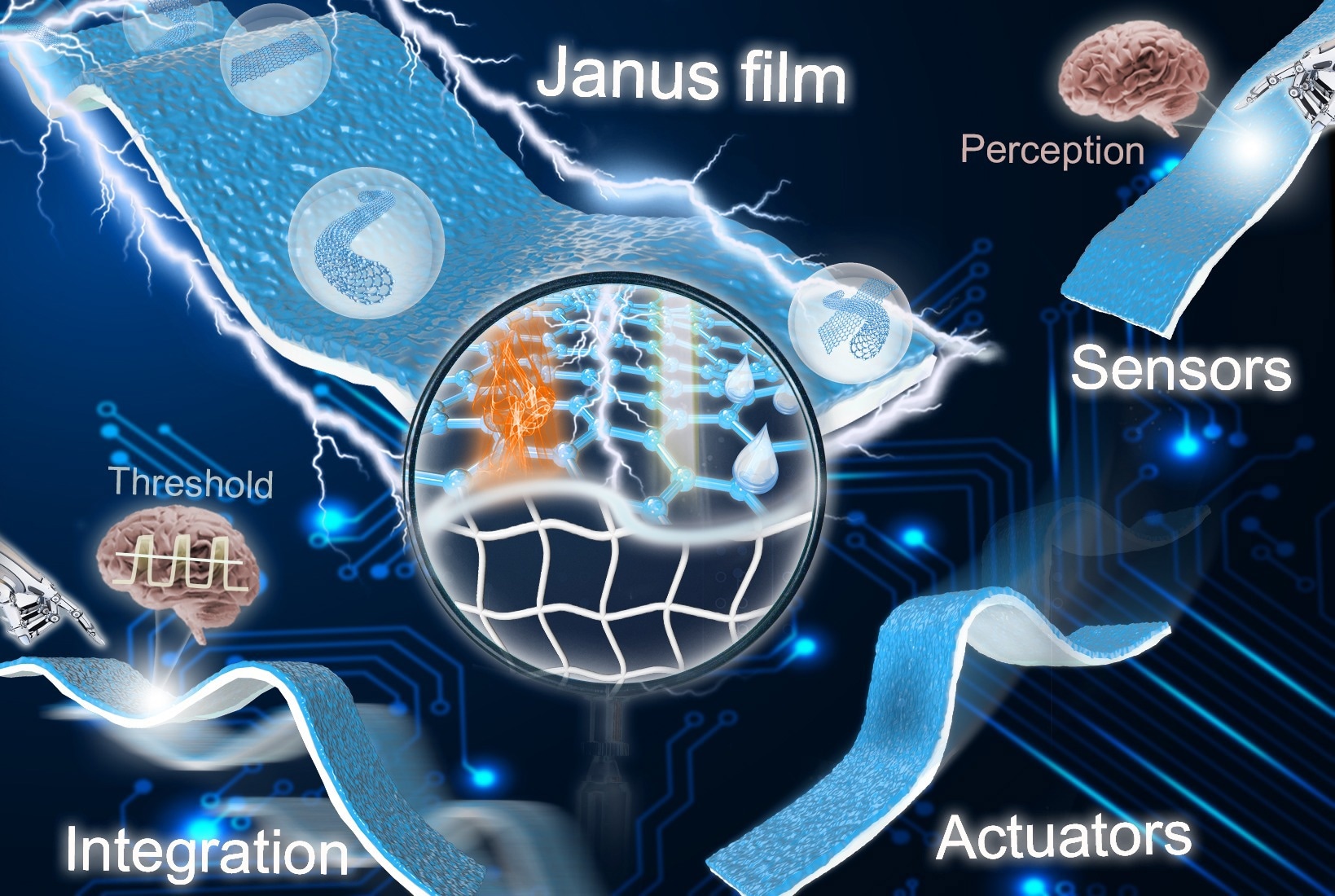Janus films exhibit huge potential in actuation, sensing, advanced separation, energy conversion, storage, etc. This is made possible by the special physical or chemical properties and synergetic multifunctions.

The carbon-based Janus films for flexible sensors, soft actuators and beyond. Image Credit: NIMTE
Integrating the special benefits of carbon nanomaterials in intrinsic mechanical flexibility, electrical conductivity, ease of assembly, as well as chemical and thermal stability, carbon-based Janus films have gained huge attention from scientists.
Depending on the earlier reported studies performed on carbon-based Janus films, Professor Tao Chen and his collaborators at the Ningbo Institute of Materials Technology and Engineering (NIMTE) of the Chinese Academy of Sciences (CAS) have systematically summarized the significant advances in carbon-based Janus films.
This concentrates on the preparation strategy, the relationship between structure and performance, and the varied potential applications used in actuation, sensing, and combined devices.
In the review published in the journal Accounts of Materials Research, the scientists presented various representative carbon nanomaterials that have been utilized in flexible sensing or actuating devices.
Also, it explained their intrinsic structures and physical or chemical properties, thereby offering useful guidance for material selection as per the preferred properties and application scenarios.
Great emphasis has been put on the entire preparation strategy, such as solid-supported physical or chemical methods, and interfacial engineering methods depending on liquid support.
In addition, the relationship between the surface or interface structures and the intrinsic properties of the carbon-based Janus films was detailed thoroughly.
Furthermore, different applications of carbon-based Janus films in soft actuation, electronic skins (e-skins), and self-sensing actuating systems were illustrated, thereby adding up to the development of non-contact sensing devices, high-performance epidermal electronics, self-sensing actuators, light-driven actuators, and their incorporation for smart robots.
Also, the present development difficulties and future trends of carbon-based Janus films were demonstrated in terms of the structural interfaces, structural design, and combined functionality.
It is anticipated that this review will give deep insights into further research on carbon-based Janus films and hence gain the interest of scientists from various backgrounds, thereby creating new opportunities.
This study was financially supported by the National Natural Science Foundation of China, the National Key Research and Development Program of China, the Sino-German Mobility Program, etc.
Journal Reference:
Zhou, W., et al. (2023) Carbon-Based Janus Films toward Flexible Sensors, Soft Actuators, and Beyond. Accounts of Materials Research. doi.org/10.1021/accountsmr.2c00213.